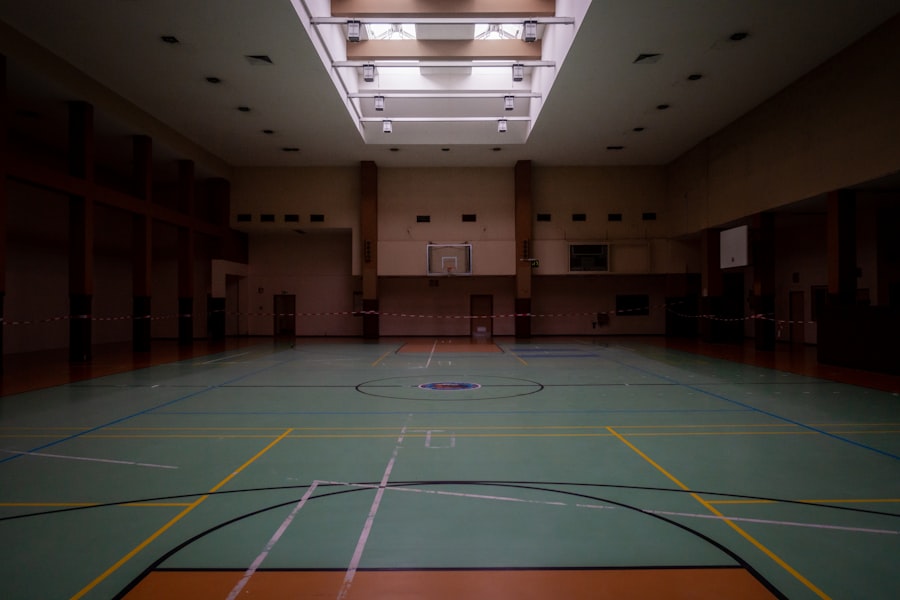The Science of Bouncing Ball
Description
Bouncing is a fascinating phenomenon that can be understood through the lens of physics, particularly mechanics. When an object, such as a ball, strikes a surface, it undergoes a series of interactions governed by the laws of motion and energy transfer. The initial impact compresses the ball, storing potential energy in the form of elastic deformation.
This energy is then converted back into kinetic energy as the ball rebounds off the surface. The efficiency of this energy transfer is crucial in determining how high the ball will bounce. The fundamental principles governing bouncing can be illustrated through Newton’s laws of motion.
According to Newton’s third law, for every action, there is an equal and opposite reaction. When a ball hits the ground, it exerts a force on the surface, and in response, the surface exerts an equal force back on the ball. This reaction force propels the ball upward, allowing it to bounce.
The height of the bounce is influenced by several factors, including the initial velocity of the ball, the angle of impact, and the properties of both the ball and the surface it strikes.
Key Takeaways
- The physics of bouncing involves the transfer of kinetic energy and potential energy between the ball and the surface it bounces on.
- Elasticity plays a crucial role in determining how high a ball will bounce, as it affects the amount of energy stored and released during the bounce.
- Factors affecting bounce height include the material of the ball, the surface it bounces on, and the angle and velocity at which it is thrown.
- The surface material has a significant influence on the bounce height, with harder surfaces producing higher bounces due to less energy absorption.
- Air pressure also affects bounce height, with higher air pressure resulting in higher bounce heights due to increased resistance to deformation.
- The relationship between mass and bounce is complex, with heavier balls generally bouncing lower, but the elasticity and surface material also play a role.
- The angle and velocity at which a ball is thrown are important factors in determining its bounce height, with higher angles and velocities resulting in higher bounces.
- The science of bouncing balls has real-world applications in sports equipment design, engineering, and materials science, among other fields.
The Role of Elasticity
Elasticity plays a pivotal role in the bouncing behavior of objects. It refers to the ability of a material to return to its original shape after being deformed. In the context of a bouncing ball, elasticity determines how much kinetic energy is retained after impact.
A highly elastic material, such as rubber, will deform significantly upon impact but will also return to its original shape quickly, allowing for a more efficient transfer of energy back into motion. Conversely, materials with low elasticity will absorb more energy during deformation and lose it as heat or sound, resulting in a lower bounce.
It is defined as the ratio of the velocity of separation to the velocity of approach between two colliding bodies. For example, if a rubber ball has a coefficient of restitution close to 1, it means that it retains most of its kinetic energy after bouncing. In contrast, a tennis ball, which has a lower coefficient due to its construction and material properties, will not bounce as high.
Understanding these principles allows engineers and designers to select appropriate materials for specific applications where bouncing behavior is critical.
Factors Affecting Bounce Height

Several factors influence how high a ball will bounce after striking a surface. One primary factor is the initial height from which the ball is dropped. The greater the height, the more gravitational potential energy is converted into kinetic energy just before impact. This conversion is governed by the equation for gravitational potential energy (PE = mgh), where m is mass, g is acceleration due to gravity, and h is height. Thus, dropping a ball from a higher elevation will generally result in a higher bounce.
Another significant factor is the type of surface on which the ball lands. Hard surfaces like concrete or hardwood floors provide a more rigid reaction force compared to softer surfaces like grass or carpet. The rigidity of the surface affects how much energy is absorbed during impact and how much is returned to the ball for its upward motion.
Additionally, temperature can also play a role; warmer temperatures can increase the elasticity of materials, allowing for higher bounces compared to colder conditions where materials may become stiffer and less responsive.
The Influence of Surface Material
| Surface Material | Influence |
|---|---|
| Concrete | High durability and low maintenance |
| Grass | Natural look and feel, requires regular maintenance |
| Asphalt | Smooth surface for driving, prone to cracking |
| Gravel | Low cost, good drainage, but can be messy |
The material composition of both the ball and the surface it strikes significantly impacts bouncing behavior. Different materials exhibit varying degrees of hardness and elasticity, which directly affect how energy is transferred during impact. For instance, when a basketball hits a wooden floor, it bounces higher than when it strikes a sandy beach due to the differences in surface hardness and energy absorption characteristics.
Moreover, surface texture can also influence bounce height. A smooth surface allows for more efficient energy transfer compared to a rough surface that may create friction and dissipate energy as heat. For example, when comparing a basketball court with a gravel path, the court’s smoothness facilitates higher bounces due to reduced energy loss during impact.
This understanding is crucial in sports science and engineering when designing playing surfaces that optimize performance.
The Impact of Air Pressure
Air pressure within a ball can significantly affect its bouncing characteristics. A well-inflated ball maintains its shape and elasticity better than one that is under-inflated. When air pressure inside a ball decreases, its ability to compress and then return to its original shape diminishes, leading to lower bounce heights.
This phenomenon can be observed in various sports; for instance, soccer balls that are properly inflated will perform better in terms of bounce and control compared to those that are flat. The relationship between air pressure and bounce height can be quantified through experiments that measure how different inflation levels affect performance. For example, studies have shown that increasing the air pressure in a basketball leads to higher bounce heights due to improved elasticity and reduced deformation upon impact with the ground.
This principle is not only applicable in sports but also in various engineering applications where pneumatic systems are involved.
The Relationship Between Mass and Bounce

The mass of an object plays an essential role in determining its bouncing behavior. Heavier balls tend to have more momentum when dropped from a height due to their greater mass (momentum = mass × velocity).
In fact, lighter balls often bounce higher than heavier ones when dropped from the same height because they experience less gravitational force acting on them during their ascent. Additionally, mass affects how much energy is absorbed during impact with a surface. A heavier ball may compress more upon impact but also has more inertia working against it as it tries to rebound.
This interplay between mass and elasticity can be observed in various sports equipment; for instance, lighter tennis balls tend to bounce higher than heavier ones due to their ability to retain more kinetic energy after impact.
The Importance of Angle and Velocity
The angle at which a ball strikes a surface significantly influences its bouncing behavior. When a ball hits the ground at an angle rather than straight down, it can create different trajectories upon rebounding. The angle of incidence (the angle at which it approaches) affects how much vertical versus horizontal velocity is imparted during the bounce.
A steeper angle typically results in a higher vertical rebound compared to shallower angles that may cause more horizontal movement. Velocity at impact also plays a crucial role in determining bounce height. A ball dropped from a greater height will have higher velocity upon impact due to gravitational acceleration.
This increased velocity translates into greater kinetic energy being available for conversion back into potential energy during the rebound phase. In sports like basketball or volleyball, players often utilize angles and velocities strategically to maximize their chances of scoring or making successful plays.
Real-world Applications of Bouncing Ball Science
The principles governing bouncing behavior have numerous real-world applications across various fields. In sports science, understanding how different balls behave when they bounce can lead to improved training techniques and equipment design. For instance, basketballs are engineered with specific materials and air pressure levels to optimize their performance on courts worldwide.
In engineering and design, knowledge about bouncing dynamics informs product development in areas such as automotive safety features or cushioning systems in consumer goods. For example, car manufacturers utilize principles of elasticity and impact absorption when designing crumple zones that protect passengers during collisions by managing how forces are distributed upon impact. Additionally, educational tools often leverage bouncing principles to teach fundamental concepts in physics and engineering.
Experiments involving different types of balls and surfaces can provide hands-on learning experiences that illustrate key concepts such as energy transfer, momentum conservation, and material properties. In summary, bouncing behavior encompasses complex interactions between physics principles such as elasticity, mass, air pressure, and surface characteristics. By exploring these factors in depth, we gain valuable insights applicable not only in sports but also across various scientific and engineering disciplines.
If you’re interested in exploring more fun and interactive games, you should check out the article Mania de Palabras 2. This word game will challenge your vocabulary and keep you entertained for hours. It’s a great way to exercise your brain while having fun.
FAQs
What is a bouncing ball?
A bouncing ball is a small, round object that is designed to rebound off of surfaces when it is dropped or thrown.
What are bouncing balls made of?
Bouncing balls are typically made of rubber or a similar elastic material that allows them to compress and then quickly regain their original shape when they come into contact with a surface.
How does a bouncing ball work?
When a bouncing ball is dropped or thrown, it compresses upon impact with a surface, storing potential energy. This potential energy is then converted into kinetic energy as the ball rebounds off the surface, causing it to bounce back up.
What are some common uses of bouncing balls?
Bouncing balls are commonly used as toys for children, in sports such as basketball and tennis, and in various games and activities that involve throwing and catching.
Are there different types of bouncing balls?
Yes, there are different types of bouncing balls, including super bouncy balls, high bounce balls, and rubber balls with varying levels of elasticity and bounce height.
Can bouncing balls be dangerous?
While bouncing balls are generally safe when used as intended, they can pose a risk of injury if thrown at high speeds or inappropriately used in certain environments. It is important to use bouncing balls responsibly and in accordance with any safety guidelines provided.





